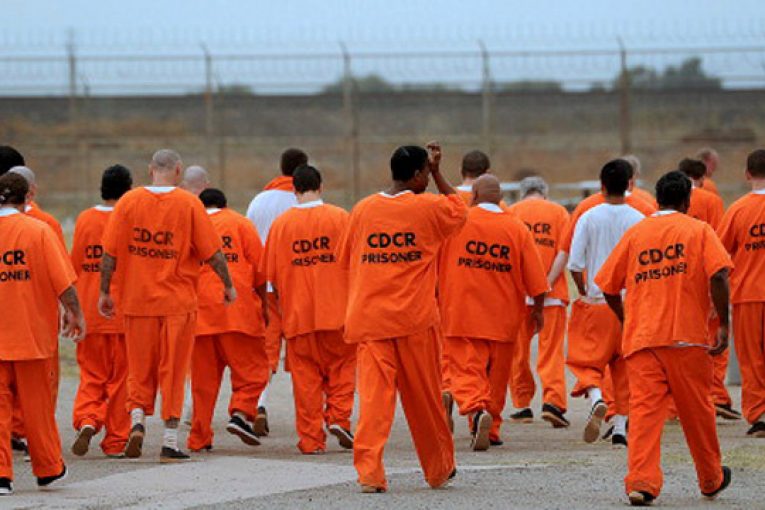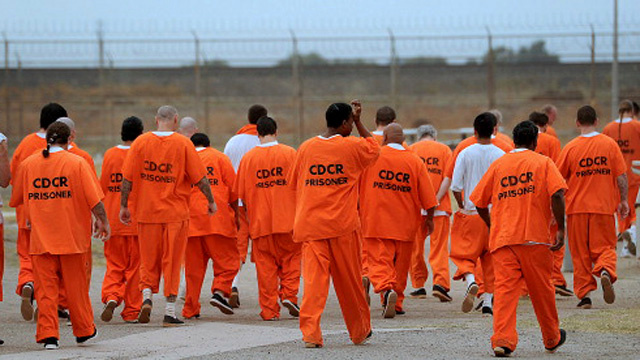


By Jamel Walker
I had an interesting conversation the other day with a teacher. I wondered whether she cared about her tax dollars being squandered funding mass incarceration. I was curious about her opinion on would taxpayers care that the correctional officers (i.e., custody staff) they pay to run the state’s prisons are, in effect, stealing money from them.
Her initial reaction was she did not believe taxpayers cared what goes on in the state’s prisons. All they cared about was feeling safe. I reminded her that the nation is currently in the throes of a burgeoning prison reform movement.
This movement is informed, in part, by the fact that paying more taxes to incarcerate increasingly more people is unsustainable. This fact alone indicates the taxpayer does care. Thus, it would seem that not only do they care about safety; they also care about  what it costs to feel safe.
what it costs to feel safe.
As of March 2023, there were 96,610 incarcerated people in the California Department of Corrections and Rehabilitation (CDCR). For fiscal year 2020/2021, it cost California taxpayers $77,361 to incarcerate me and every other incarcerated person where I am housed. That is an average cost of $7,164,402,210.
Perhaps the taxpayers are not aware that, among other things, public safety rests on rehabilitation’s potential to transform lives in positive ways. After all, approximately 75% of those currently incarcerated will be released back into society. Therefore, a crucial question for the taxpayer must be, do they want prisoners rehabilitated to the degree that the likelihood of future victimization would be virtually eliminated or not?
Her response to my question was not shocking, yet still somewhat surprising. She said, most prisoners do not want to change anyway. With that statement, I could imagine many of her fellow taxpayers expressing the same sentiment. Then, a logical question would be, what are taxpayers paying for?
Are they paying just to incapacitate human beings in cages for a time only to release them at some time in the future angrier, bitter, just as dangerous or even more, than when they first arrived?
Why should taxpayers pay over seven billion dollars per year just to be victimized by the same individuals once they are eventually released? Currently, there is an approximate three-year recidivism rate of 20%.
That amounts to 18,000+ taxpayers victimized after spending $1,393,498 to incapacitate them for the previous year before their release.
The truth is, nearly every incarcerated person wants to change. When afforded the conditions conducive to change, they do change. As a youthful offender currently serving my 37th year of a Life Without Parole (LWOP) sentence, I changed from a bitter, angry, broken 21-year-old man-baby suffering from, as many of us do, antisocial personality disorder, to a self-aware, empathetic, emotionally intelligent senior citizen.
I was able to change for two important reasons: because of the deep remorse I felt for taking the life of an innocent human being, and because of my eventual access to rehabilitative programs that allowed me to understand that, I could change. I came to understand, I was more than what I heard most of my life; that I was worthless, not worthy of love and respect, would not amount to anything; and, as a result, I am the worst thing I have ever done.
By participating in rehabilitative programming, many incarcerating people who were told the same things as a child, have changed to become individuals who are now law abiding, taxpaying would-be neighbors of yours.
However, it must be said, it is a miracle any of us have changed given the hostility we face at every turn at the hands of the vast majority of the custody staff who are paid by the taxpayer to carry out a particular mission.
That mission is: “To facilitate the successful reintegration of the individuals in our care back to their communities equipped with the tools to be drug-free, healthy, and employable members of society by providing education, treatment, rehabilitation, and restorative justice programs, all in a safe and humane environment.”
This mission statement amounts to an edict come down from on high. However, one cannot successfully carry out a mission if one does not believe in the mission.
Despite the CDCR’s expectation, many of the custody staff expected to carry out the mission actively place obstacles in incarcerated people’s path to gaining access to rehabilitative programs.
This is likely due to their possession of similar beliefs and attitudes as the teacher. They just do not believe we can change. This is why some custody staff refuse to conduct a timely release so we can attend rehabilitative programs.
There have been several instances when non-custody staff, who act as sponsors of the available rehabilitative programs, have outwardly complained that custody staff refuse to release program participants, are outwardly hostile toward them for even asking, sometimes hanging up in their faces when they call asking for participants to be released.
Many custody staff members make derogatory comments about our participation in rehabilitative programming including college classes. Custody staff members have personally told me, on more than one occasion, how much they resent their “taxpayer dollars being spent to send an inmate to college.”
On one occasion, while picking up three prescriptions at the clinic, the LVN handing out my prescriptions acerbically commented, “taxpayer dollars.”
I responded by saying, my family pays taxes. Therefore, my family paid for my prescriptions as well as your salary.
I similarly stated to one custody staff member complaining about spending his taxes for prisoners to go to college, my family pays your salary you use to send your kids to college.
Thus, when met with such derision and open hostility, it is indeed quite a miraculous feat that any incarcerated people are successful in rehabilitating themselves. When met with such hostility, many incarcerated people become discouraged. They are reminded of the people from their childhoods that told them repeatedly that they were no good, they were stupid, would not amount to anything.
Rather than be constant reminders of these negative voices that have played so long in their heads, custody staff should be the positive voices of encouragement, coaching them to be better than they were when they arrived. After all, this is their mission. This is what they are paid over $100,000 a year for. To do anything other than this amounts to stealing from their fellow taxpayers.





